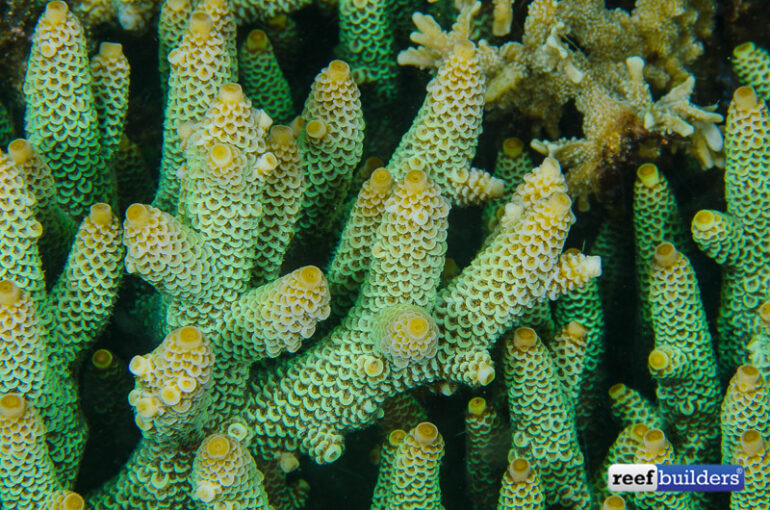Bali Aquarium has just come out with an Indonesian strain of Green Apple Acropora spathulata. After a collecting trip in central Indonesia last year, three fragments were collected out of the first ever colony of this species discovered in Indonesia. This colony was almost three feet across, and has already recovered, showing minimal signs of the initial sampling.
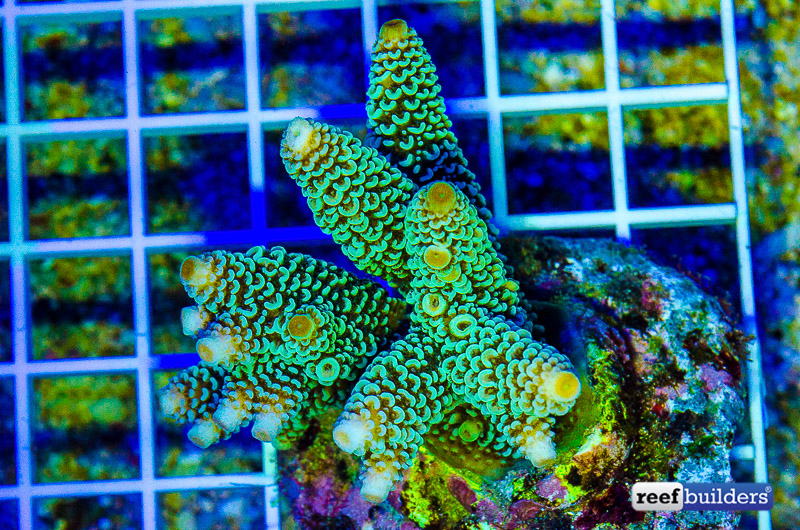
After a year of growing these frags in their ocean farm, these first cultured Acropora spathulata from Bali Aquarium are now over a foot high and wide. They are now big enough to be broodstock colonies to produce the first truly sustainable Acropora spathulata in the aquarium trade.
The large size and wild origin of Australian A. spathulata has proven challenging for some reefers to keep and grow, so hopefully the cultured Indonesian Spathulata colonies will potentially fare much better. Furthermore, Australian Spathulata from the wild is commonly infested with Acro Eating Flatworms, while AEFWs are rarely seen in Indonesian Acros.
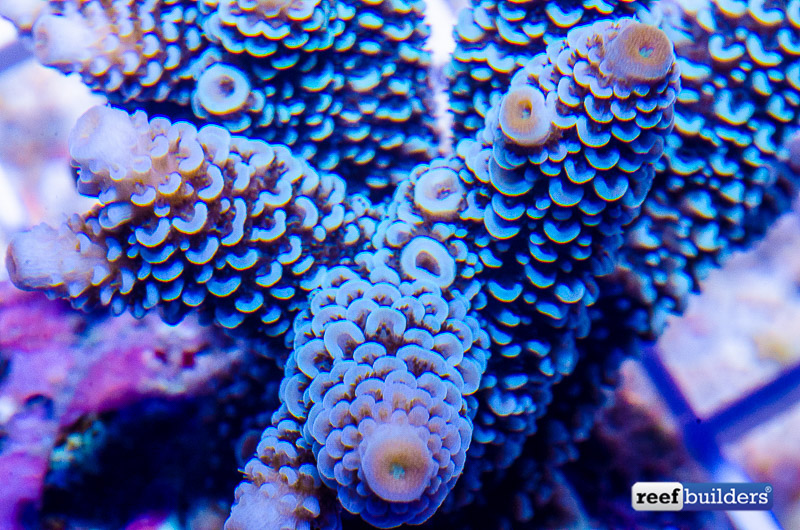
Acropora spathulata is a little bit like an Acro Milli on steroids. They really look like our iconic millies with their scalloped radial corallites but with branches almost twice as thick as the classic Acropora millepora. The particularity of this species is to have radial corallite that join together to form a chain-mail pattern by groups of 3-5 corallites and sometime more.
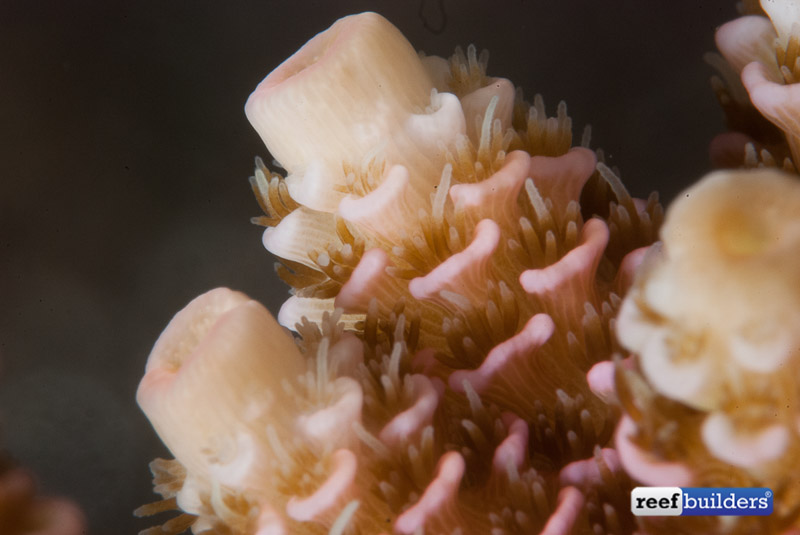
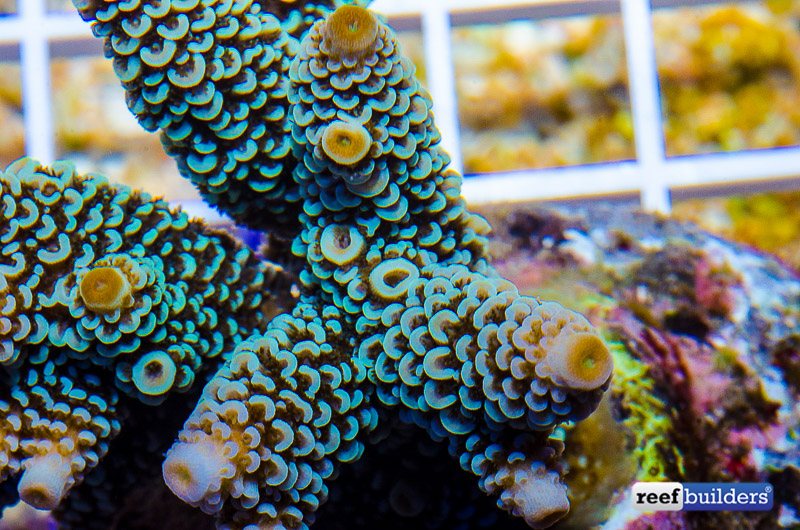
This characteristic feature is unique to this species, and this is what differentiate them from their very close look alike relative Acropora aspera at the size of a frag. If corallites of all these species have slight differences, it’s mainly the thickness of the branches that differentiate them, with A. millepora having the skinniest branches, A. prostata being a little bit thicker, a more prominent axial coralite and thicker, more packed radial coralites, A. spathulata is a lot thicker with chains of radial corallites.
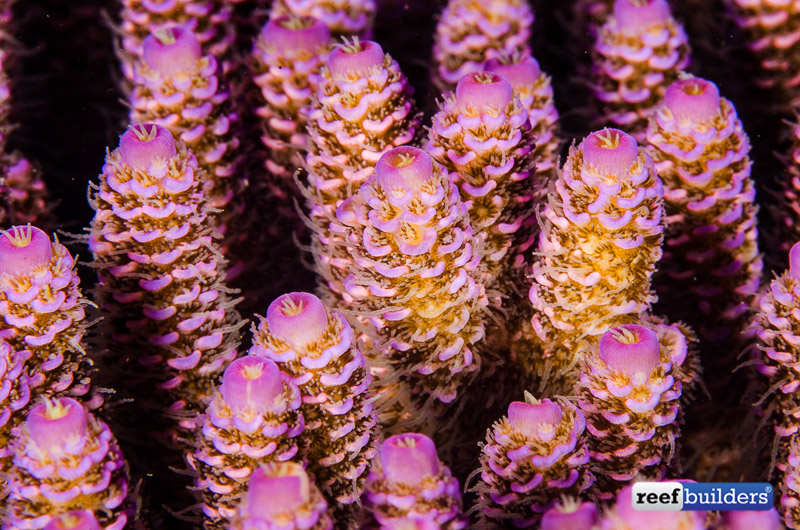
Indonesia, having the highest coral diversity in the world with the epicenter of Acropora diversity being in Tominy Bay, Sulawesi, still probably holds a lot of surprises in terms of Acropora species. With collectors now exploring out of Darwin on the border of Indonesian biodiversity, and Indonesian collectors moving east, will bring a whole bunch of novelty in our hobby.
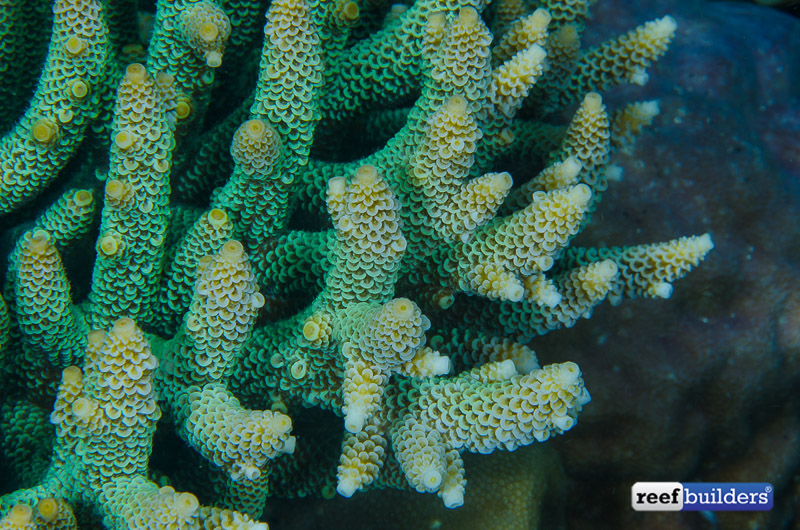
The huge size of these colonies and the long travel time to these remote collection area makes it unrealistic to bring whole colonies or even piece of them to be shipped as wild harvested corals. But bringing back frags to be maricultured in Bali or elsewhere opens a new dimension and a whole new collection ground. There is no doubt that the Green Apple Spathulata from Bali Aquarium is just the latest of many more surprises in store from Indonesian corals.


